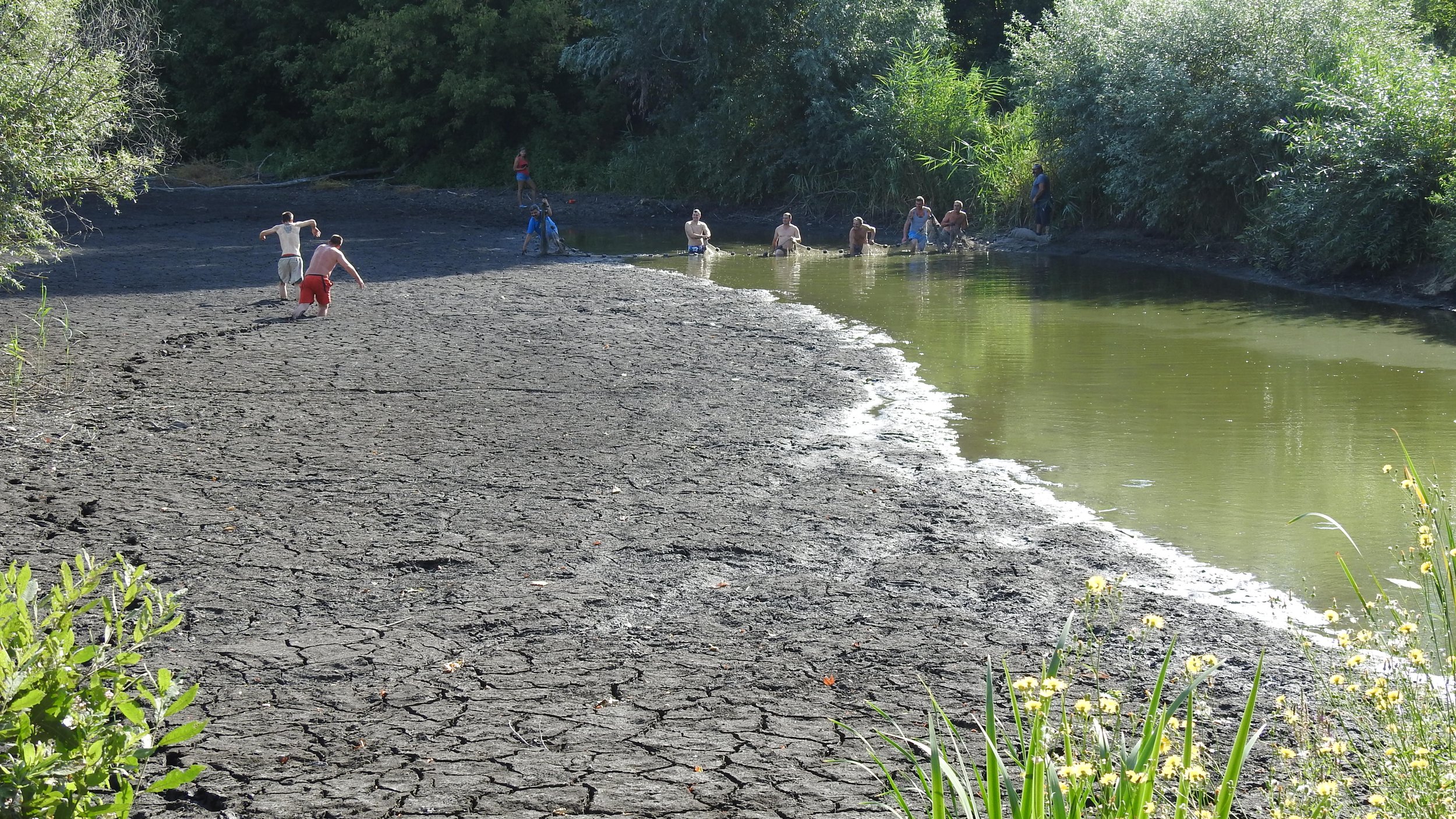Hungary Photovoice
The pictures have been selected prior to the photovoice discussion. Following the workshop, we thematically grouped the pictures (channel, fishes, lake, land) with the accompanying quotes that give voice to the photos. Selected quoted were slightly edited for better understanding and preserving anonymity in certain sentences. Further suggestions for minor editing for better readability are welcome.
Canal
‘The top part of the image shows when the Dong-ér was dredged. You can see that there was still water in it. Then, in the fall—or maybe the following year—but the point is [...] the point is that not long after, the whole thing completely dried up.’
- T. Csaba, local inhabitant and farmer
‘From the wildlife that we could save, we went out with the kids and gathered what we could—here, I have a picture of a turtle we rescued. We relocated it to a place where there was still a viable habitat. But the destruction was massive. There were so many animals lost. Whatever we managed to find, we took to an area that still had water.’
- T. Csaba, local inhabitant and farmer
‘Both of these photos are from Banó, taken at the same location. One of the structures in Banó is used to regulate the dam, allowing water from the Dongér Canal to be released over an area of about 40 hectares. The top photo shows the reservoir in a normal state.
Then something happened. The owner of a nearby sour cherry orchard submitted a complaint about water retention saying that he couldn't farm properly under these conditions and wanted to sell the land. It wasn’t that the trees were rotting from too much water; the issue was that he couldn’t spray pesticides properly. His equipment—narrow-wheeled, suspended sprayers—exerted too much pressure on the soil, causing it to sink in the mud.[…]
We told the regional water management authority’s representative that this was a case of one person against a hundred—or, really, hundreds—because the financial damage caused by draining the water was enormous. I even suggested that if one ridiculous complaint was enough to trigger action, then maybe a hundred of us should start calling in complaints to overwhelm their phone lines.’
- T. Csaba, local inhabitant and farmer
FISHES
‘The title of this picture is Everyone is in Trouble. But they’re still trying. Well, they’re stuck in the mud, and so are the fish.’
- T. Csaba, local inhabitant and farmer
‘It’s just that when the water gets stirred up, the remaining puddles where the fish are become full of sediment. The fish inhale this through their gills, which then clog up, making them unable to survive. These fish are then given to the wild boars. They’re placed further away because even wild boars can sink into the mud and won’t go in too deep. The fish are left on the shore, and by morning or the next day, they’re gone. [...] The Fishing Association did it right then and there. If they saw a fish floating on its back, they pulled it out. Then one person tossed it to the next, passing it along until it reached the shore.’
— T. Csaba, local inhabitant and farmer
This is Pit One—before it was dredged. The members of the fishing club collected the fish in crates and transferred them to another lake so that this lake could be dredged with a machine. Since then, even the dredged lake has dried up. Well... there's only a puddle-sized amount of water left in it.’
- K. Attila, local inhabitant and photographer
LAKE
‘This is the horse-watering reservoir, a 40-hectare storage lake. On the left, you can see the fire truck, and on the right, there’s a road. Right next to it, where it hasn’t been on fire, is the Dongér Canal. The already burned area next to it—that’s the lake itself, along with the reed bed. The problem was that while birds could fly away, their chicks obviously couldn’t. Larger mammals, like wild boars and deer, managed to escape from the reeds, but smaller creatures, like hedgehogs with tiny legs, were all trapped inside.’
— T. Csaba, local inhabitant and farmer
‘This shows the difference—back in 2005, there was still plenty of water, and it was a beautiful, scenic place. But the second photo was taken last Sunday (in 2025). Now, this is what it looks like—it has dried up completely, and the vegetation has reclaimed the area. It's not just overgrown with waist-high weeds; in some places, trees up to three meters tall have grown. It’s so unrecognizable that it’s hard to tell if I was standing in the exact same spot when taking the new photo as I was in the old one.’
— K. Attila, local inhabitant and photographer
Land
‘Alright, so this was taken from about ground, but the desolation was so intense that there were times when I would stand, lower myself a little, and then just spin around. Wherever the dust was stirred up, whether by the car engines or the wind, it was brutal.’
- T. Csaba, local inhabitant and farmer









